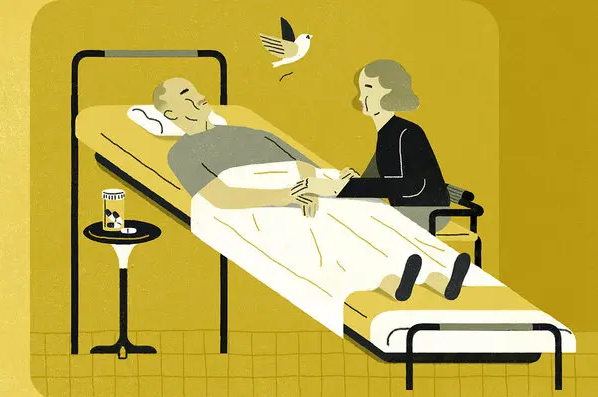
By Kenneth Norton
The New Hampshire legislature is considering a bill to join our Maine and Vermont neighbors to allow New Hampshire residents with a terminal illness, in consultation with two medical providers, the option of ending their suffering and having a peaceful death. As a Licensed Independent Clinical Social Worker who has spent over four decades working to prevent suicide at the local, state, national and international level, I think it is time to look closely at the differences between the two, and stop referring to medical aid in dying as suicide.
Legally, in the 10 states and Washington D.C. where medical aid in dying is allowed, the death is not counted as a suicide death. Medical Examiners and Coroners list the underlying terminal illness, which the person was diagnosed with, as the cause of death on the death certificate of patients who utilize medical aid in dying.
People who die by suicide, for whatever reason, no longer wish to live and feel that they have no other option than death. The person who chooses medical aid in dying wants to live yet has been diagnosed with a terminal illness that will end their life, and may cause intense suffering before they die. They are fully informed of other options including palliative care, hospice, and comfort measures. This is not a decision they are allowed to take lightly or at the spur of the moment. It requires thoughtful controls and two medical opinions in support of specific terminal illness.
A high correlation exists between suicide and mental illness. The person who dies by suicide may or may not be rational, or even competent in that moment. Research shows that many suicide deaths are impulsive. Although the person may have contemplated suicide for some time, it may only be a matter of minutes between making the decision to die and then taking their life. By contrast, in medical aid in dying, people go through a formal process with two medical professionals that includes: an assessment of their mental capability, a determination about their terminal illness, an informed consent process including a review of available options, and a mandatory waiting period
People who die by suicide die alone, and often die by violent means. In New Hampshire, over 75% of suicides involve firearms or hanging. Nationally, over 75% of suicide deaths occur in a home or primary residence. These violent deaths result in trauma for their loved ones who return home to find their loved one dead. The scene, shock, and aftermath are so distressing that many people are no longer able to continue to live in their homes. Suicide deaths can also be traumatizing and contribute to PTSD in first responders who are called to the scene.
Family, friends, and loved ones of a person who dies by suicide can experience intense emotions including shock, guilt, anger, shame, regret, and despair as they try to come to terms with the suddenness of the death, and make sense of the often-unanswerable question: “why?” People who are bereaved by suicide may experience suicidal thoughts and are statistically at higher risk themselves for suicide. Suicide deaths are often devasting and life altering for family and friends resulting in a long and complicated grief process that may last years. It is said the person who dies by suicide dies a single death, but their family/friends are left to die a thousand deaths.
By contrast, the person who goes through the medical aid in dying process, frequently includes loved ones in their decision. Most die in their home, surrounded by their family and friends. The death is planned, and peaceful. Family and friends are left at peace knowing that this was their choice and their suffering is over. To be clear, this does not stop those close people from grieving the death, but it eliminates the “whys” and “what ifs” as well as the trauma from a sudden suicide.
Despite our best efforts, there is still considerable shame and stigma associated with, and experienced by family and friends after a suicide. We should be careful not to contribute to that stigma by extending it to medical aid in dying. Whether you support or are opposed to medical aid in dying, we should acknowledge there are significant differences between the two, and we should stop labeling medical aid in dying as suicide.
Complete Article ↪HERE↩!
